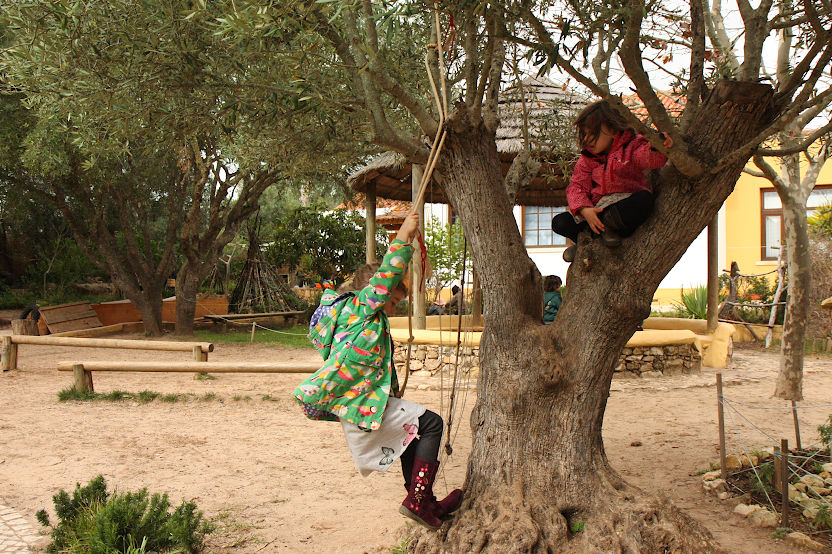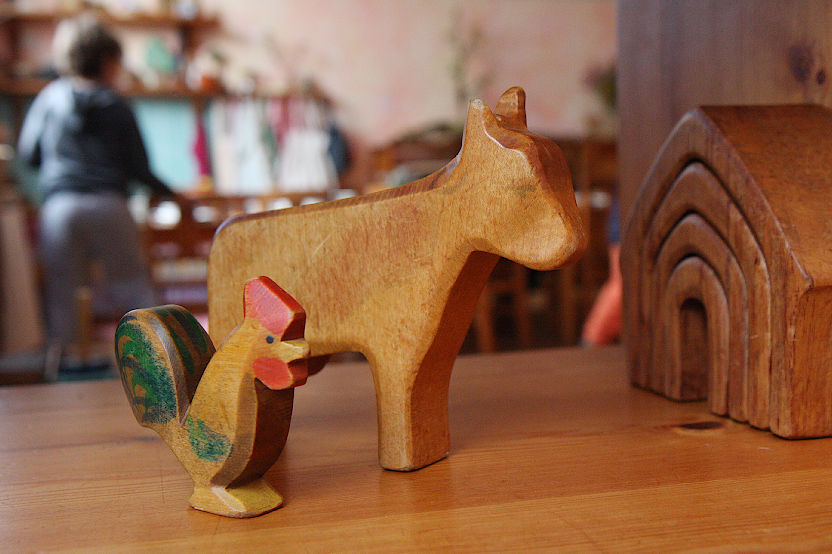Play
It’s in spontaneous play that the child finds the best way to express their internal world. The natural and child-accessible materials provide the child with a spontaneous and innate experience of their interior world. “There is no activity self initiated by an adult which can be as serious as the free play self initiated by the child.” (Rudolf Steiner). Through free play, the make believe transforms cloths into robes and crowns or other materials bring to the child the possibility of expressing their internal world which they externally experience as play. Baskets, cloths, rags, crowns, tapes, pine cones, cork among other materials used in symbolic games are always available in the activities room to be utilized whenever the children need them.
The artistic expressions are stressed through a set of diverse experiences. According to Waldorf Pedagogy, it is important for the child in the first seven years of life to “understand through play,” which means to experience through all of the child’s senses and bodily movements and to be active in their limbs. The experience of expressions of the physical body are made possible by the control of movements, balance and the sensibility of aesthetics. The use and feeling of the body is expressed, above all else, when the child plays; because at this age the child plays moving their entire body.

The possibility of using different materials to understand different graphic representations happens spontaneously. Drawing, beeswax, bread dough, sand, branches, wool among others are some of the materials with which the older children experiment to naturally represent the world which surrounds them. To have contact with these possibilities before attributing a cognitive meaning allows the children to develop a natural interest and curiosity for that which will come in first grade.
The Rhythmic Circle
The Rhythmic Circle is a special moment of the group where there exists a coming together of everything and a sense of unity. The innate predisposition of the child to imitate is also visible as the Educator delivers the gestures and movements of this time. This is the rhythmic moment to experience songs and seasonal gestures where through language, song, movement, finger play and others the educator guides the group to the unified experience of the body, soul and spirit. Weekly we have a time for the art of Eurythmy, which turns spoken word and music visible through movements executed by the body as if it was an instrument. In the Pedagogic eurythmy rhythmic histories and musical motifs are used. Besides the beneficial effects for coordination, concentration and posture, Eurythmy helps the child/youth develop balance and harmony. It strengthens the initiatives of the will, and quickens the vital forces. This is a moment in which all of the group participates with much enthusiasm.

Story time
Story time plays a fundamental role in the experience of a child, and the stories which are told daily may be accompanied by a table theatre. This is a small scene made with materials available in the classroom and small figures (either previously made or created by the educators for a specific story). In this way not only is the comprehension of oral language stimulated, but also imitation is stimulated, as the children reproduce this moment (either the same story or one they created) during free play.